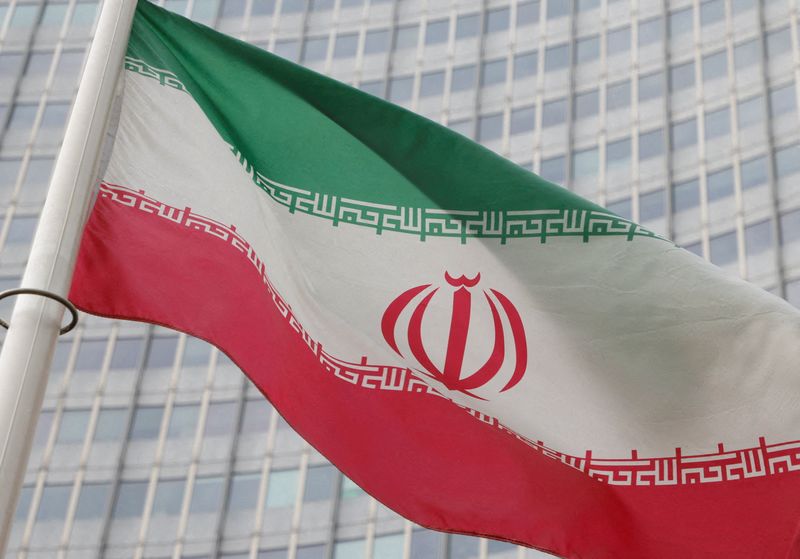Factbox-The UN nuclear watchdog’s long list of difficulties in Iran
2024.05.06 08:31

By Francois Murphy
VIENNA (Reuters) – U.N. nuclear watchdog chief Rafael Grossi will hold talks with senior officials in Iran on Monday and Tuesday, hoping to bolster his agency’s oversight of Iran’s nuclear activities.
Since then-President Donald Trump’s decision in 2018 to pull the United States out of a landmark deal between Iran and major powers that restricted Iran’s nuclear activities in exchange for sanctions relief, that accord has unravelled.
Iran retaliated to the re-imposition of sanctions lifted under the deal by breaching and going far beyond the nuclear restrictions. It is now enriching uranium to up to 60% purity, close to the 90% of weapons grade, and has enough uranium enriched to that level, if enriched further, for two atom bombs.
Western powers say there is no credible civil justification for that. Iran says its aims are purely peaceful.
Below are some of the difficulties the International Atomic Energy Agency currently faces in Iran.
SNAP INSPECTIONS
Under the 2015 deal between Iran and major powers, Iran agreed to implement the Additional Protocol, an agreement between the IAEA and member states that lets the IAEA carry out snap inspections at locations of interest including undeclared ones, not just the declared facilities it inspects regularly.
As part of measures it announced in February 2021, Iran stopped implementing the Additional Protocol, ending snap inspections.
MONITORING SCOPE
As a party to the nuclear Non-Proliferation Treaty (NPT), Iran is subject to IAEA inspections of its core nuclear facilities, such as its uranium-enrichment plants at Natanz and Fordow. The 2015 deal, however, expanded the scope of IAEA monitoring to more activities and facilities.
3rd party Ad. Not an offer or recommendation by Investing.com. See disclosure here or
remove ads
.
Those included production and inventory of parts for centrifuges, the machines that enrich uranium, as well as yellowcake, a form of uranium that needs further processing before it can be fed into centrifuges for enrichment.
Iran scrapped those extra measures in February 2021. The IAEA has now lost “continuity of knowledge” on items including the number of centrifuges Iran has, heightening fears that Iran could set up a secret enrichment site. Without snap inspections, that would be much harder to detect.
CAMERAS
To cushion the blow of the measures announced in February 2021, the IAEA struck a deal with Tehran under which surveillance cameras and other equipment carrying out extra monitoring introduced by the 2015 deal would stay in place but the data collected would remain in Iran’s hands, under seal.
The IAEA still has not had access to any of that footage.
In June 2022, Iran had the IAEA remove those cameras. In March 2023, Iran and the IAEA agreed on a “Joint Statement” that was short on detail but that the IAEA understood to be a sweeping pledge of cooperation by Iran, including on re-installing those cameras.
In the months following the statement a fraction of the cameras the IAEA wanted to instal were installed but the IAEA says there was “no further progress” after June of last year on cooperation as outlined in the Joint Statement.
INSPECTORS
In September 2023, Iran barred many of the IAEA’s top enrichment experts assigned to the country, which diplomats said left only one such expert on the highly sensitive technology.
3rd party Ad. Not an offer or recommendation by Investing.com. See disclosure here or
remove ads
.
The IAEA condemned the move, saying that although it was technically allowed, it was unprecedented and a “very serious blow” to its ability to do its job properly in Iran.
URANIUM TRACES
The IAEA has been demanding for years that Iran explain the origin of uranium traces found at largely old but undeclared sites in Iran.
The IAEA’s 35-nation Board of Governors passed a resolution in June 2022 urging Iran to cooperate with the IAEA on the issue “without delay” and then another in November 2022 ordering Iran to cooperate urgently with the IAEA’s investigation.
Iran has said such resolutions are “anti-Iranian” and politically motivated. Recent IAEA reports have said Iran has still not provided technically credible explanations for the uranium traces.
MODIFIED CODE 3.1
According to the IAEA so-called modified Code 3.1, part of the agreement spelling out Iran’s obligations under the NPT “provides for the submission to the Agency of design information for new nuclear facilities as soon as the decision to construct, or to authorize construction of, a new facility has been taken, whichever is the earlier”.
Since February 2021 Iran has said it is no longer implementing the code, but the IAEA says it is a legal obligation that Iran cannot suspend.
This again raises the question of whether Iran is planning or has started to build nuclear facilities in secret. It has publicly announced plans for new nuclear power plants and broken ground on them without informing the IAEA.
3rd party Ad. Not an offer or recommendation by Investing.com. See disclosure here or
remove ads
.
Source link







